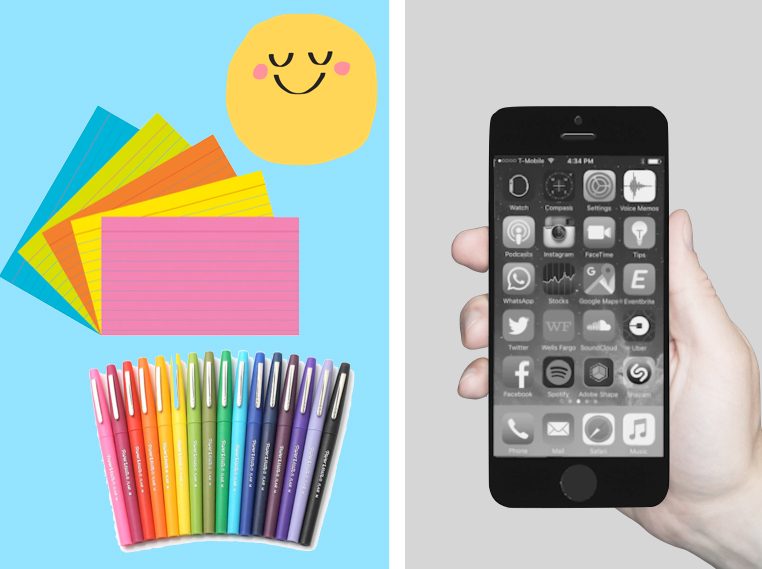
This is no accident. This is a deliberate design decision.
It’s the same reason why fast food logos are often warm reds, yellows, and orange tones. These colours jump out at us. They create a sense of excitement and urgency.
In his book Drunk Tank Pink, Dr Adam Alter argues colour is a hidden force in our lives that can shape the way we think, feel, and behave.
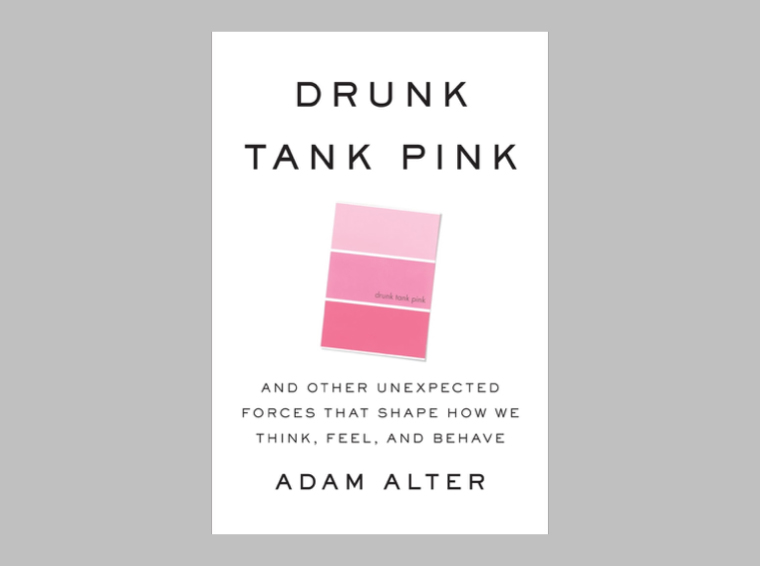
In this blog, I’m going to explore how you can use colour as a tool to help you study more effectively and keep your brain focused and engaged on the task at hand.
There is whole field of research dedicated to exploring the impact of different colours.
One fascinating study looked at the impact of a particular tone of pink (Baker-Miller Pink/Drunk Tank Pink) that appeared to sap people of their energy. Researcher Dr Alexander Schauss found staring at this shade of pink could lower people’s heart rate and pulse compared to staring at other colours.
A 7-month trial was conducted in which prison confinement cells were painted in this pink shade. According to Dr Schauss, when people were exposed for just 15 minutes to this pink colour in their prison cell, it made them more relaxed, less aggressive, and reduced the incidence of violent behaviour.
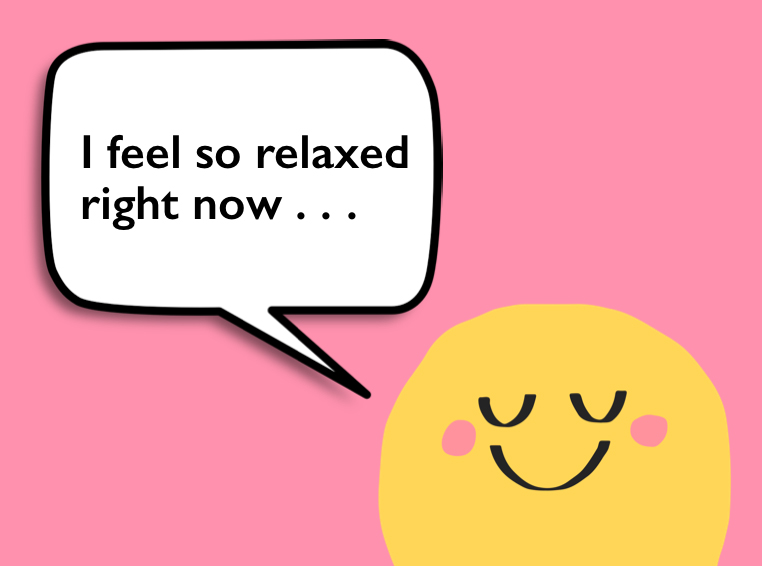
But before you race off to the hardware store to buy a tin of pink paint, you need to understand a few simple things about the psychology of colour.
The research suggests that colour can act as a powerful trigger. It can cue different emotions, thoughts, and behaviours. For instance, when you see a red Stop Sign or light, this captures your attention.
But how we react to colour also comes down to personal preference and particular contexts. Colour can have different meanings in different contexts (e.g., on Valentine’s Day red generally symbolises romance rather than “Danger! Look out!”).
The bottom line is this: when it comes to colour you need to experiment to see what works for you.
Colour can evoke particular states (e.g., a state of calm or alertness). It can also perk up your brain and transform a dry, boring subject into something that’s a little bit more novel and interesting for your brain.
Below I share 9 ways you can use colour to study and work more effectively.
There’s something about a brightly coloured post-it note that captures our attention. This is why I love using post-it notes to help focus my mind and stay on track.
On a post-it note, I create a list of no more than three things that I need to do. Once I’ve completed those tasks, I scrunch up the post-it and throw it in the bin. This action feels surprisingly satisfying! I’ll then grab a fresh post-it note (often in a different colour) to create a new list.
If I’m not sure how to get started with a task (e.g., Task: Write blog post on colour), I’ll grab another post-it note and I’ll scribble down the first tiny action I can take to kick-start the process (e.g., Tiny action: Open Word document).
If you have trouble finding your study materials for each subject and they all look the same or are scattered all over the house, you can use colour to make it easier for you to find what you need.
Try assigning a particular colour to a subject. This makes it easier to stay organised and identify your materials. At home, I assign a light blue to my exercise files and folders. When it’s time to plan my workout for the day, I look for my light blue files and folders.
A simple and cheap way to colour code your materials without investing in brand new stationery is to gather a collection of paint swatches from your local hardware store. You can repurpose these as labels by cutting them into smaller sections and sticking them on your files, notebooks, etc.
Testing yourself with flashcards is a highly effective way to study for a test and/or exam. You can create your own flashcard decks by purchasing index cards in a range of different colours.
Try assigning certain colours to different subjects. Alternatively, you can simply pick a colour you want to work with depending on how you feel.
There are no hard and fast rules. Feel free to mix up your flashcard colours to keep things fresh for your brain.

Creating a mind map on a topic is a simple way to combat study fatigue and inject a little colour and creativity into your study sessions.
Although using different coloured pens isn’t absolutely essential for mind mapping, it’s well worth doing. I use different colours to create the different branches on my mind maps.
I have dozens of colourful mind maps at home. Despite my lack of drawing skills, these mind maps look great and are fun to review primarily due to the different coloured branches.
It’s important that you feel good in your study environment. If you feel good in your study space, you’re more likely to sit down and study there.
I’ve decorated my workspace by putting up colourful posters, inspiring and funny pictures, and artwork on my walls.
If you don’t have access to artwork/posters, you can print out colourful pictures and quotes of things that make you feel good. The addition of a few indoor plants can also help to liven up your space as well as purify the air.
Fluorescent highlighters feel really good to use. It can feel both fun and satisfying to strike things off your to-do list. You can also use these pens to time block different tasks/events in your diary and draw your attention to important tasks that you need to do.
Word of warning: When it comes to studying for a test or exam, I don’t recommend highlighting your books and/or notes as a way to learn. I know it feels good but research shows it’s an ineffective way to learn.

Red pen is often associated with failure and criticism. This is why seeing a teacher’s comments scribbled in red pen can trigger negative emotions in many of us.
Generally, we don’t like reading comments written by others in red pen. It feels nasty! But it turns out if you use a red pen to correct your own work, this can help you to pick up more errors.
Dr Adam Alter discusses one study that looked at the difference between using a blue pen and a red pen to correct an essay. Students who used a blue pen picked up on average 19 errors. In contrast, students using a red pen picked up an average of 24 errors.
But using a red pen has its limitations! If you are trying to solve a problem or taking a test, using a red pen can backfire by activating ‘avoidance motivation’. This is a distracting state of mind that can impair a student’s ability to solve problems and increase stress levels.
As a rule of thumb, use a blue or black pen when solving problems and taking tests. But when you need to cast a more critical eye on your work (e.g., in the proofreading phase), switch to using a red pen.
A lot of us use our phones as an easy way to escape from the boredom and discomfort we experience when doing our work. The apps on our phones are like candy. They are designed to be highly addictive and hijack our attention.
This is where you can be strategic with how you use colour: you can make your phone look more like a tool (and less like a toy) by turning on greyscale mode.
Viewing your phone in greyscale is a completely different experience to using it in full-colour mode. As a year 8 student recently shared with me:
“When I made my phone greyscale, it made it really boring to use.”
Try it and see for yourself!
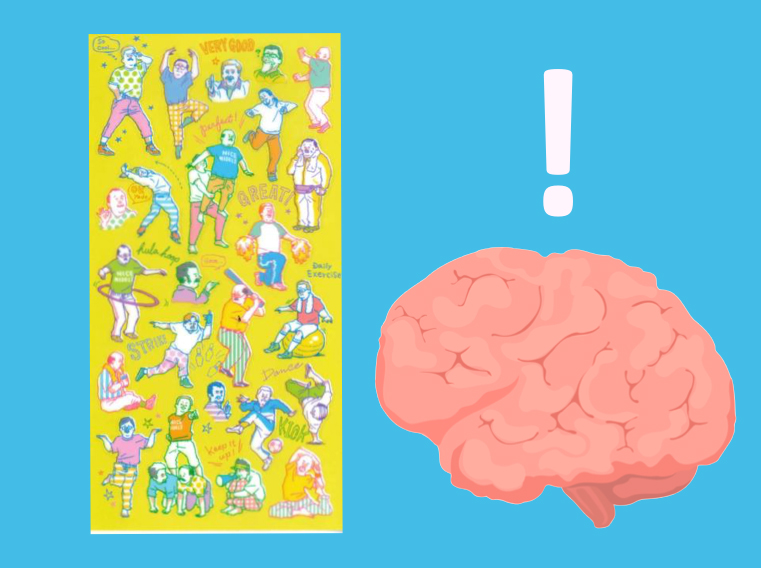
This strategy may seem juvenile. If it reminds you of being back in primary school and receiving gold stars, hear me out.
Too often we don’t stop to acknowledge and appreciate ourselves for accomplishing tasks. We finish one thing and we immediately shift our focus to the next task on our to-do list.
When you work this way, your work routine can quickly become soul destroying and your motivation can take a dive.
This is why every so often I pull out my fun stamps and colourful sheets of stickers. After completing a task, I pause and acknowledge what I’ve done by giving myself a stamp or a fun sticker. It’s a little celebration.
For some reason, my brain responds particularly well to quirky Japanese stickers featuring ogisan (Japanese grandfathers) exercising. We’re all different, so explore what stamps and stickers work for you.
Colours are lot of fun! Incorporating a little more colour into your studies and work life can take things to the next level and perk up your brain when it needs a little motivational boost.
But the colours that I like may not be the colours that you like. Your colour preferences may also vary from day to day. Notice the colours that make you feel good and have fun seeing how you can incorporate them into your study sessions.
Share This:

I didn’t know how to relax. I had one speed and one speed only . . . GO!
When I started dating my husband, he made a comment I never forgot. He said, “You’re intense.”
I laughed it off, thinking, “How ridiculous!”. But looking back, he was right.
Over the last few years, I’ve learnt to live life at multiple speeds and different intensities.
I’ve also learnt how to manage my energy better and pace myself. One thing the pandemic taught me was the importance of slowing down and taking regenerative breaks.
For many years, even though I intellectually understood the importance of rest, I struggled to do it.
For some reason, I thought I had to be always working.
My to-do list was something I had to power through. One thing after another. Got that thing done? Quick! Cross it off the list! Onto the next task.
As a student, I developed a bad habit of staying back late at university. As an undergrad, I’d hang out with my psychology friends in the computer labs until nearly midnight (I had to call the university security service to escort me to my car!).
Then, as a PhD student, I’d be in my office working late when everyone else had gone home. I’d buy takeaway that I’d eat alone at my desk. I’d get home late. I’d get to bed late.
How did I feel the next day?
Not great.
The problem with this approach is now glaringly obvious to me: because I was getting less sleep, I started to feel run down, which made it hard for me to focus, do my best thinking, and work efficiently.
Going fast all the time was actually slowing me down.
Then, I met a Brazilian PhD student called Carlos.
Carlos showed me there was a different way to work. A better way. A more sustainable way.

When I first met Carlos, I was taken aback by his beaming smile and infectious laugh.
He seemed genuinely happy, which wasn’t the case for many PhD students.
It wasn’t uncommon to see PhD students glued to their seats for hours with a 2-litre bottle of Coke on their desks. But this was not Carlos’s style.
I learnt that Carlos rode his bike to university every day (partly to save money and partly to clear his mind). He’d take breaks to play soccer and go rock climbing.
With all this activity, you might be wondering whether Carlos was managing to get any work done on his PhD.
He certainly was.
Carlos was super productive as a PhD student.
He was publishing papers and on track to finish his PhD on time, all with a big smile.
Here’s the really interesting thing about Carlos . . .
When he started working on his PhD, he was like me: pushing himself to work long, ridiculous hours.
As an International student, Carlos had a strict deadline for submitting his PhD thesis. At the beginning of his PhD, he told me he was driven by fear that he might not finish the work in time, so working nonstop seemed like the only path forward.
But then Carlos had an epiphany.
He realised he was just as productive when he allowed himself to engage in fun activities (e.g., rock climbing and playing soccer) as when he insisted on pushing himself to work crazy hours without taking any breaks.
This made Carlos realise that he needed to get serious about these fun rest breaks and prioritise them.
Whether Carlos realised it or not, he was emulating the behaviour of top research scientists.
In one longitudinal study, 40 scientists in their 40s were followed for 30 years. These scientists had attended top universities and showed promise in their careers.

The researchers wanted to know the difference between the people who had become top scientists and those who became mediocre scientists.
In other words, what were the top scientists doing that the mediocre scientists weren’t doing?
One of the key differences that stood out was movement.
The top scientists moved a lot more than the mediocre scientists. They engaged in activities such as skiing, hiking, swimming, surfing and playing tennis.
In contrast, the mediocre scientists did a lot less physical activity.
They were more likely to say, “I’m too busy to go hiking this weekend. There’s work I need to catch up on.” They saw physical movement as eating into the time they could be working.

The top scientists thought differently about movement. Moving their bodies was critical to doing good scientific work. It was something they needed to prioritise in their lives.

When I first read about this study, I immediately thought about Carlos. Riding his bike, playing soccer, and rock climbing were all activities that helped him work effectively on his PhD. These weren’t time-wasting activities; they were necessities.
Movement gets you out of your head and grounds you in your body. It also gives you space away from your work, which our minds need when doing complex and challenging tasks.
In addition, as you move your body, your brain is bathed in feel-good chemicals. It’s easier to get things done when you feel good and less stressed. You can have more fun. You come back into balance.
But do all breaks need to involve movement?
Not always. But you should try to find fun activities that you can do away from your desk, phone, or computer.
Do something that lets your mind loose and requires little to no mental effort to execute.
Here are some of my favourite fun break activities:
These fun break activities may not seem like much fun to you. I understand if steaming your clothes sounds boring (I’m even surprised by how much fun this is).
Your job is to discover your own fun break activities. But how do you do this? It’s simple – you follow the Rules of Fun.
Psychologist Risa Williams lays out the Rules of Fun in her brilliant book The Ultimate Anxiety Toolkit.

The Rules of Fun are as follows:
What was fun for you yesterday may not be fun today. That’s okay. Focus on what you find fun today. Only you know what that is.
The activity isn’t something you should find fun. It’s actually fun for you (it brings a smile to your face and a sense of calm).
For example, many Australians love watching the footy, but I don’t enjoy it. I’d much rather head outside, run around, kick a footy, or throw a frisbee. This is fun for me!
Risa Williams also points out that your list of fun activities will need to be updated regularly. She explains that we are constantly changing and evolving, so naturally, what we find fun will change and evolve, too.
Stay flexible and trust your intuition when it comes to the activities you find fun.
Start to listen to your body. Begin to notice what activities leave you feeling good.
The break activity shouldn’t leave you feeling mentally fried or emotionally wrecked. If it does, you’ve violated this rule.

For example, I never feel good when binge-watching a Netflix series or sitting for long periods. In contrast, I nearly always feel good after a walk.
As I mentioned, you need to get out of your head and get grounded in your body.
If you’re stuck in an anxiety loop about a comment or post a friend made on social media, the last thing you want to do is go online. You need to calm down by engaging in a fun activity (away from screens) that brings you back into balance.
You don’t need to fly to Bali or have an expensive massage to take a fun break. You can engage in many free and cheap activities at home and on your own.
Going for a walk around the block is free and easy. Drawing some silly faces on a scrap of paper is free and fun.

In contrast, travelling to the gym to take a cardio class (and getting there on time) feels much harder.
Let’s face it: if the break activity feels difficult or requires a lot of mental or physical effort, time, or money, you’re probably not going to do it.
However, when your fun break activities are easy, you’re more likely to do them again and again.
Little kids know how to have fun. They will happily and instinctively pick up some crayons to draw. They’ll nap without guilt. But as we grow older, many of us lose our sense of fun and our ability to rest. We start to take ourselves too seriously.
But no matter your age, it’s time to get serious about taking fun breaks.
I’ve discovered that the key to feeling satisfied and content is to feel calm and grounded. But you can’t feel calm and grounded if you constantly push yourself to do more and more.
To keep your body and mind in balance, you need to insert fun breaks into your day. These fun breaks are not a waste of time. They are essential for feeling good, fully alive, and doing your best work.
So, in the spirit of fun, what will you do to give yourself a fun break? Follow the rules of fun and experiment with different activities. Be playful!
Finally, do you know what happened to Carlos? He’s gone on to become a respected Senior Lecturer at a top university in Australia . . . and he still enjoys going rock climbing.

Take a tour of my home and you’ll see whiteboards in my office, dining room, bedroom and kitchen.
These whiteboards, covered in scribbled text and bad drawings, make my house look a little quirky. But upon closer inspection, you’ll see that these whiteboards help me to work my way through the chaos and confusion of life.
Here are a few ideas on how you can use a whiteboard to make life a little easier for yourself:
If you’re a perfectionist like myself, a large whiteboard is a great tool to decrease anxiety and overwhelm surrounding big projects.
Afraid of making a mistake? Stress less!
With one swipe of a cloth, you can wipe away any ideas you don’t like. So don’t hold back. Make a mess. Make a start.
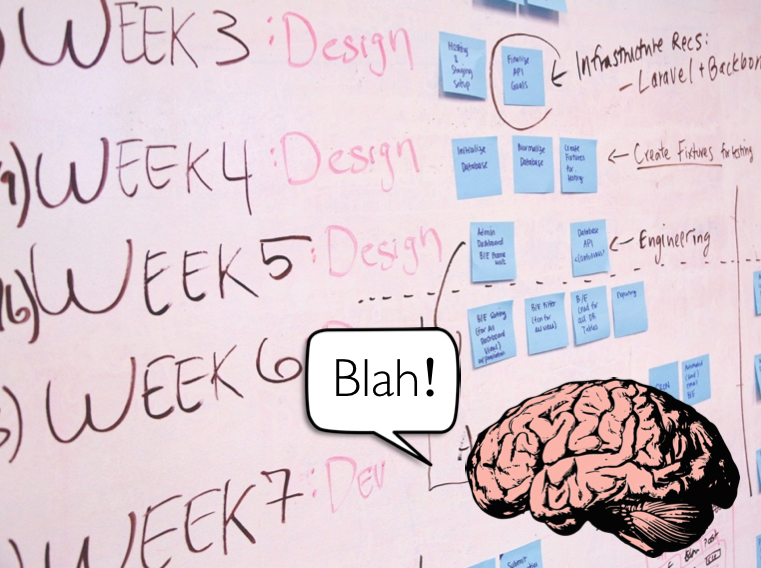
Have a lot going on in your life? I know this feeling all too well.
Most of us go through the day with lots of random thoughts swirling inside our heads. Unless we capture these thoughts, they can take up precious mental space and deplete our brainpower.
When I’m feeling overwhelmed, in order to reset and feel more in control, I stand up, head over to the closest whiteboard and I spend a few minutes scribbling out all the things that are on my mind. These things usually include:
• People to call and/or email
• Deadlines for projects
• Conversations to have with people
• Ideas for future projects
• Little irritants (things that are bugging me)
• Things I need to buy (usually food)
There’s something really powerful about getting your thoughts out of your head and onto a whiteboard. Try it and see how you feel after a brain dump session.
How can a whiteboard help you ace your exams?
Two words: active recall.
According to cognitive psychology, active recall (also known as retrieval practice) is the number one way to retain information. Research shows it’s a much more effective way to study than rereading your books or highlighting your notes.
Here’s how you can do a quick active recall session with a whiteboard:
1. Grab your whiteboard markers and a copy of your syllabus.
2. Flip straight to the unit content section.
3. Now choose a syllabus point.
4. Set a timer for 5 minutes.
5. Without looking at your notes or books, write and/or draw as much as you can remember on that syllabus point.
6. When the timer goes off, check to see how much you recalled correctly and where the gaps in your knowledge are.
7. Got something wrong or missed an important bit of information? Grab a different coloured pen and write that stuff down.

If you need to learn a presentation in a short period of time, I highly recommend doing active recall on a whiteboard.
This is how I learn all my presentations in a short period of time. I set a timer for 25 minutes and do an active recall session (I can’t stop until the timer goes off).
These sessions don’t look pretty (see example above) but it doesn’t matter. What matters is the process of seeing how the content flows, bringing the information to mind and identifying the gaps in my knowledge.
Need to start working on a big project? Find yourself procrastinating? Use a whiteboard to break down that big scary projects into bite size chunks. Set a timer for 3-5 minutes and map out all the tasks that you need to do.
When the timer goes off, pick a different coloured pen and write down the first small action you can take to make a start.
If this task is still too scary for your brain, break it down again (write down an even smaller starter step). Continue breaking the task down until the task is so small that it’s not scary or overwhelming for your brain.
Create a simple to-do list on your whiteboard. After you complete each task, look at your whiteboard and strike a line through it, give it a tick or wipe it out (sometimes for a bit of fun I do all three). Then pick another item and get to work.
The aim is to get through as many items on your list as possible.
If you’re feeling stuck, you can use a whiteboard to work through the problem by deploying a simple strategy. Here’s what you do:
1. Grab two different coloured whiteboard markers.
2. Grab one marker and put yourself in the shoes of a kind friend. Imagining that you are this kind friend, write down a question to yourself. It could be something along the lines of, “What’s going on?” or “Why are you feeling stuck?”
3. With the other coloured pen, write your answer (this time as you, not as your kind friend).
4. Continue asking yourself questions and answering them (alternating between your different coloured pens). Keep doing this until you get some insights and clarity about what’s going on.
If you’re trying to establish a new habit, write the behaviour down on the whiteboard (e.g. “Do two push ups after I finish each study session”). Every time you do the behaviour give yourself a tick on the whiteboard. It’s motivating for your brain to see the ticks add up. This in turn makes you want to engage in the behaviour even more. Before you know it, you’ll be doing the behaviour without even thinking.
Now you might be wondering . . .
Of course you can use a big sheet of butcher’s paper to help you learn, plan and brainstorm.
But for me, big sheets of paper can be intimidating. Like a brand new notebook, who wants to mess it up? Not me!
But with whiteboards, you can breathe a sigh of relief. Because it really doesn’t matter if you make a mess. At the end of the day, you can take a photo of the whiteboard and wipe that mess away.
Whiteboards also allow for more movement in your day. Since you need to stand up and move around to use a whiteboard, you’re spending less time in a chair.
Research shows sitting for long periods of time is bad for your health. So the more time you can spend working on your feet, the better!
When it comes to whiteboards, bigger is generally better (up to a point). You need room to move and make a mess. You don’t want to cramp your style.
But if the whiteboard is too big, it’s going to be kind of clunky. It will take up a lot of space.
I recently purchased a large whiteboard that can attach to my wall. This is my favourite whiteboard as it’s the biggest and it doesn’t get in the way.
There’s no need to rush out and buy a stack of whiteboards.
I acquired most of my whiteboards slowly over time for free. Some were collected from university dumpsters, roadside verges, Gumtree and friends who relocated overseas.
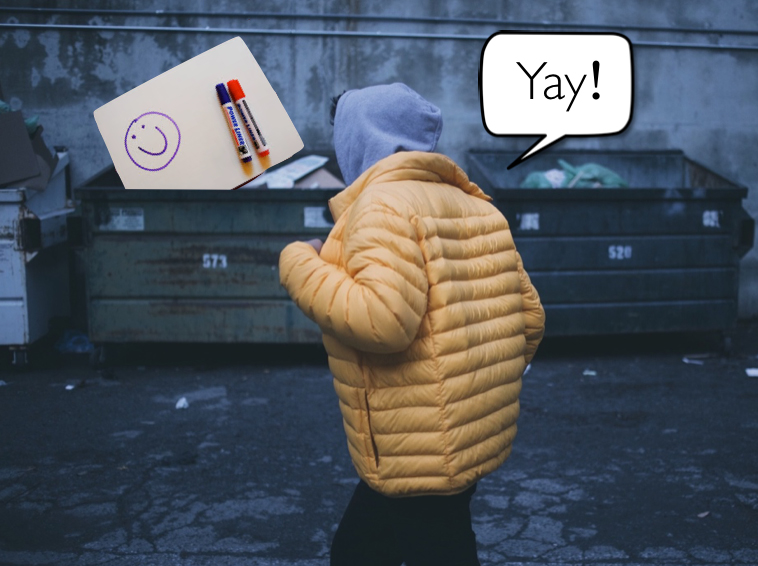
But here’s a tip . . .
When I need a change of scenery, I head to my local library and use the whiteboard that’s located in the private study room.
Keep a look out for whiteboards in your school, university or local library. I guarantee, you’ll start to see them everywhere. Don’t be afraid to use them (whiteboards are there to be used).
If you come prepared with your own set of whiteboard markers and a cloth eraser, you can get a quick whiteboard session in. At the end of the session, take a step back and look at what you’ve managed to accomplish. Notice if your whiteboard sessions leaves you feeling slightly better than before (I usually feel calmer and more in control).
Then take a quick snap with your phone so you can capture your ideas . . . before wiping all that mess away.
“He who knows he has enough is rich.”
So I’ve been experimenting with this idea. I’ve been flexing my thrift muscle and making do with what I already have.
When I was working on my PhD, I discovered how to feel rich without having a lot.
I came across a simple graph that changed the way I viewed the world: The Wundt Curve of Satisfaction.
This graph illustrates the relationship between satisfaction and stimulation from consumption. Let me explain how it works . . .
When consumption levels are relatively low, the satisfaction experienced is quite high. But there’s this point at the top of the curve where you feel totally satisfied with what you have (the comfort zone). Let’s call this point the Enough Point.
But once you go beyond the Enough Point, the returns start to diminish. As you purchase your 27th pair of shoes, you feel satisfied for about 30 seconds and then you think ‘meh!’. You don’t feel as excited as you did when you purchased your first and second pair of shoes.
So up to a point more is more, but beyond the Enough Point, more is less.
Because we live in a culture that encourages us to spend up big.
Advertisers bombard us with messages that tell us if we want to be happy and successful we need to consume stuff. And lots of it.
The job of advertisers is to construct a world that makes us want stuff that we don’t need. They tap into our desire to have more.
Advertisers also create new needs that may not have existed in us until the ad came along. Have you ever picked up an IKEA catalogue and suddenly you felt the need to have a new piece of furniture or a brand new study space?
You felt good about your life just a minute ago. But now you’re feeling dissatisfied? What’s with that?
In short, advertising can seriously mess with our minds, our happiness and our Enough Point.
It turns out the secret to happiness is simple. And it’s free (or very cheap). If you want to know what it is, read on!
According to Dr Timothy Miller if you want to be happy and content, then you need to start wanting what you already have. In other words, you need to find your Enough Point.
Over the last few months, I’ve created several new thrifty habits around saving money and appreciating what I have.
The following habits have helped me to reconnect to my Enough Point:
I discovered a great new place to eat at. It’s called The Kitchen. My home kitchen!
With a lot of my work being cancelled due to COVID-19, I had the time and energy to cook. So cook I did!
My husband and I have only ordered takeaway two times in the past eight weeks (Thai and Indian). This is a big deal as we’d usually get takeaway at least once a week.
By eating at home, it gave our taste buds a chance to reset (research shows that it takes 10 days for your taste bud cells to repopulate). We now appreciate the flavours of fresh produce and our cravings for take away have significantly decreased.
Estimated savings: $350
My husband Peter has always enjoyed growing vegetables in his spare time. But he ramped things up when COVID-19 hit. Every spare moment he had, he would be out in the garden planting vegetables!
I have to say, our garden looks amazing. But the best thing has been all the wonderful chemical free, nutrient dense produce!
Peter does 99% of the hard work in the garden. It’s my job to provide emotional support (“Great job! Keep going Pete!”) and turn the produce into delicious meals.
Estimated savings: $500
Every time I throw away food, I imagine I’m throwing away my hard earned money. It’s a painful thought!
But when you throw away food, it’s not only food and money that you waste. You waste all the resources that went into producing the food in the first place.
So I created a fun game to not let any food in my fridge and pantry go to waste. I tried to see how creative I could be with my cooking by shopping from my pantry and using up what I had (thereby avoiding going to the shops for as long as possible).
The old apples on the counter became apple crumble. The dried kidney beans became a chilli bean dish. The ripe bananas were turned into muffins.
Estimated saving: $200
Instead of signing up to Netflix, we use Kanopy. This is a collection of movies and documentaries that you can access for free if you have a library card. My local library also offers a Click and Collect service, so I order new books and pick them up once a week.
Estimated savings: $150
I had developed a bad habit of going op shopping for clothes every week. My desire for clothing was insatiable. I was addicted to finding a bargain.
Sure, you could argue it was just a bit of fun. I was only spending $5-$20 each time (hardly a fortune, right?). But I was doing it every week. Some serious coin was starting to add up.
I knew I had a problem.
So one afternoon, I went through my closet (piece by piece) and examined every item. Some items needed repairing. Others just needed a good iron. I soon realised I had more than enough clothing. It was time to start loving what I already had.
Whenever I now feel the urge to buy clothes, I repeat my mantra:
“Enough. I have enough.”
I also think about the new clothing item after it’s been worn a few times. I visualise it being tossed in the washing basket. I know from experience, it only takes a few days for the shine and novelty to wear off.
These strategies seem to have worked. It’s been two months and I haven’t purchased any clothing.
Estimated savings: $250
Instead of mindlessly shopping for clothes, I started learning new skills. I signed up to a couple of MOOCs (Massive open online courses).
MOOCs allow you to study at some of the best universities around the world (e.g. MIT, Stanford and Harvard) without leaving your home and spending a single cent. All you need is a computer, Internet connection, pen and paper and you’re good to go!
For an extensive collection of free MOOCs and reviews check out Class Central.
Estimated savings: $500
Physical movement is a big part of my life. It’s something I prioritise above everything else because it makes me feel, think and learn better. It also makes me a kinder, much more focused and disciplined person.
So before COVID-19 restrictions kicked in, I was happily spending $55 a week on a gym membership. I considered this a non negotiable expense. It was critical for my health and well-being.
But when the gym closed, I realised I could easily workout at home. I had collected a few bits of equipment over the years (e.g. dumbbells, stretch bands, and a yoga mat). With the help of a couple of fitness apps, I devised my own exercise program.
I also explored other (more fun) ways to exercise, including taking part in regular virtual dance parties with friends and going on bike rides.
Estimated savings: $450
It turns out you don’t need to have a lot of money or a big fancy house to feel rich. Why? Because freedom from desire is what makes you feel rich. It allows you to focus on things other than things: developing quality relationships, your intellect and new skills.
None of these things require material wealth. Just a curious mind and a willingness to learn (and make mistakes). As Art Buchwald once said:
“The best things in life aren’t things.”
I feel incredibly grateful for the life I have. So here’s to flexing our thrift muscles!
How do you flex your thrift muscle? Is there anything you do to save money? Feel free to share your tips below.
Dr Jane Genovese delivers interactive and engaging study skills sessions for Australian secondary schools. She has worked with thousands of secondary students, parents, teachers and lifelong learners over the past 15 years.
Get FREE study and life strategies by signing up to Dr Jane’s newsletter:
© 2025 Learning Fundamentals